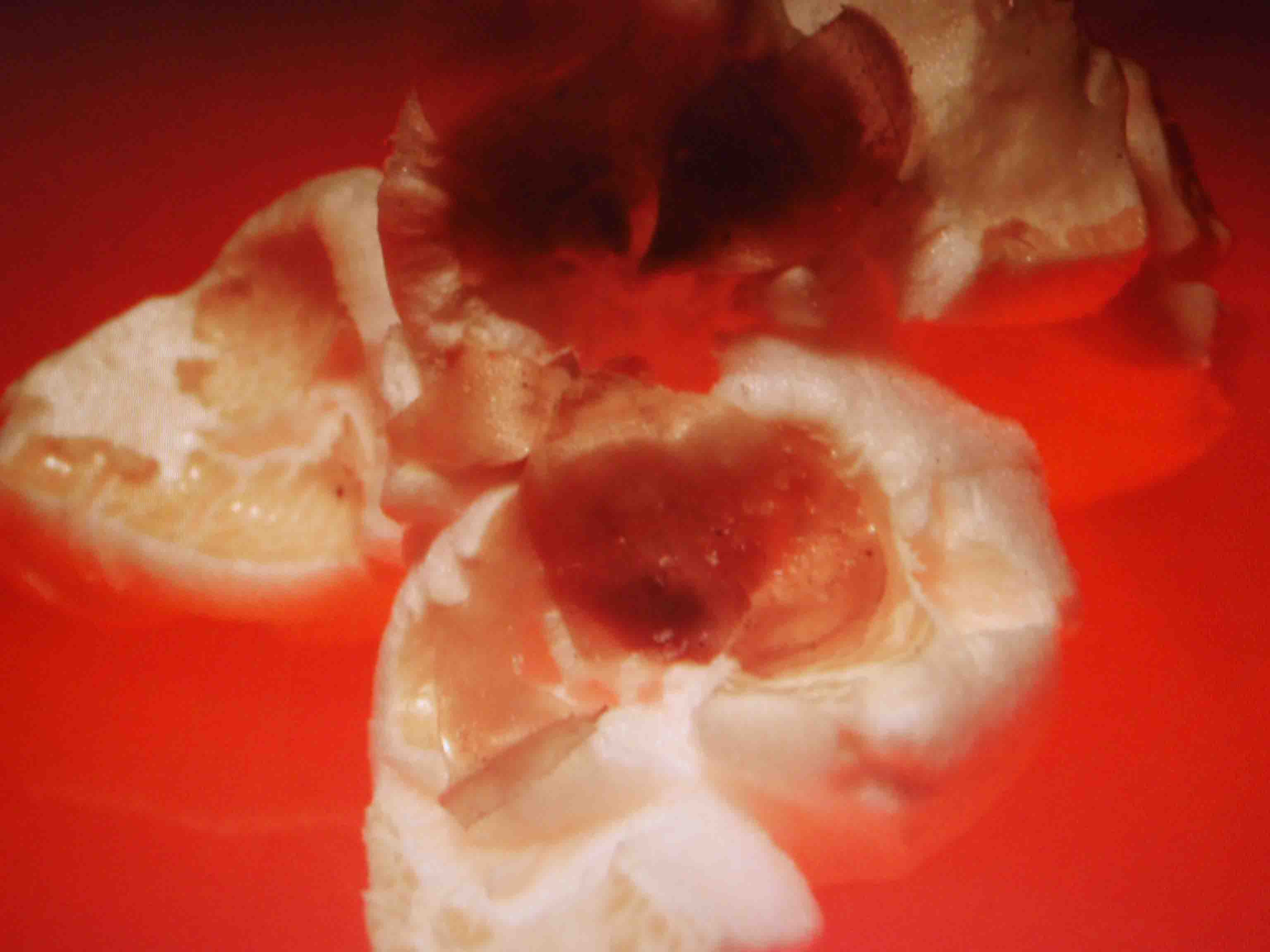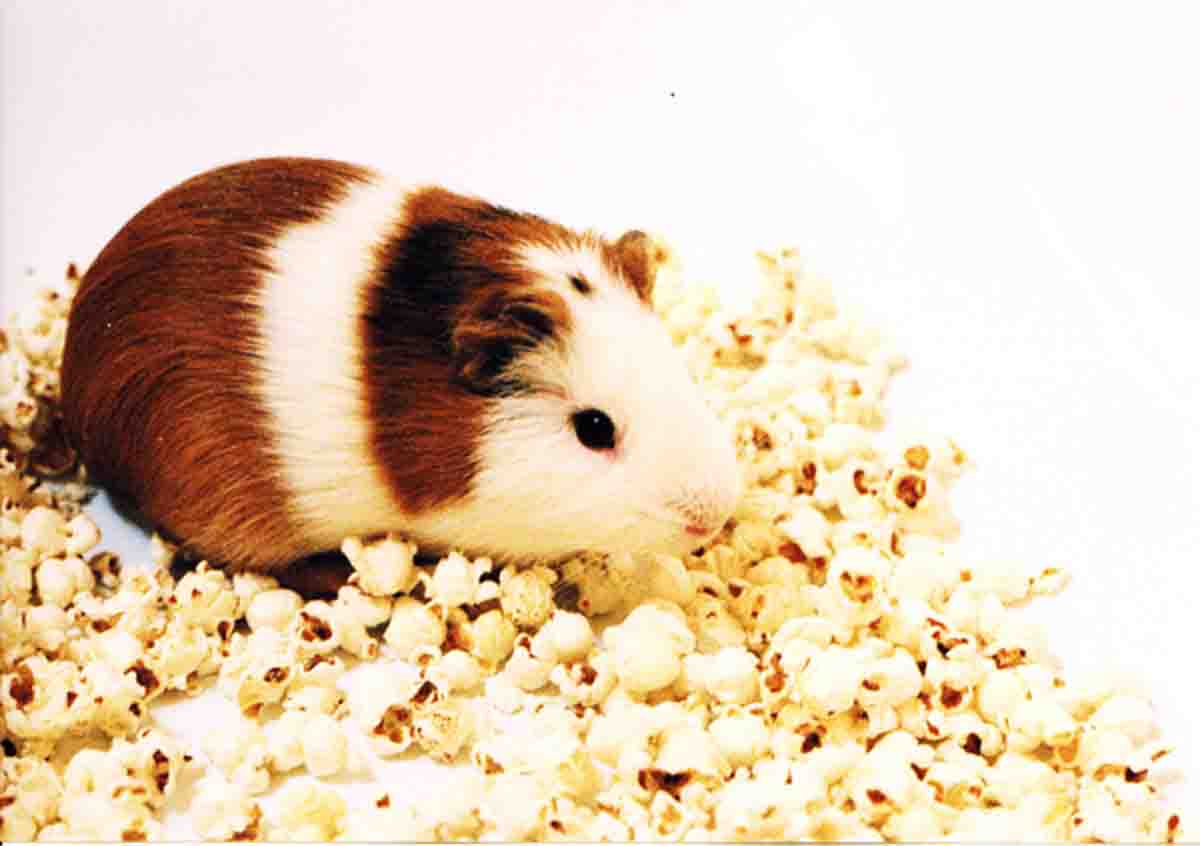popcorning
massimo premuda

Guinea pigs and microwave ovens
by Vasja Nagy
One of the main characteristics of the works of Massimo Premuda, both earlier and more recent, is certainly a feeling for theatrilising. This does not of course mean dramatizing themes dealt with but the manner of telling stories that stress some aspects of modern society. But it is not just contemporaneity, thus the time of creation of what determines these stories but also the space in which the artist lives. Let me withdraw here a bit from directly commenting on the works set up in Studio Tommaseo, since I believe that designing micro stories is a very frequent phenomenon in contemporary art. It has already been said that all great themes have already been sung and that today they are banal, but I see things differently. At a time when there was a lower level of literacy and other formal education in society, this took place precisely through official great stories. The everyday was decoded mainly through archetypes within very personal narratives and everyday life. Artistic work is not necessarily thematicised with archetypes, but those that at least decisively alluded to them are less hermetic for understanding. Works are also often defined by the genius loci and perhaps this is a way of seeking their own identity in a decentred world. Some of the works of Massimo Premuda, such as Craquelé linguistico (2005), in which he compares onomatopoeical expressions in Slovenian and Italian, deal with local themes, although they do not do this in a local manner.
However, we return to theatrical way in Premuda’s works, which I understand in the sense of staging. Among techniques of the visual arts, this approach, apart from performance and perhaps also installations, is best suited to video and photography. Above all, the relation to physical reality is important here, which appears with the perception of the images. Both photography and video in their basic forms cannot exist without this reality. It represents for them the same as brush strokes for painting. In this approach, we can distinguish between a tendency to documentation and a tendency for staging. In the first case, physical reality is eloquent in its immediacy, but in the second it is clearly and above all a tool for executing fiction. The staging approach in video and photography is closest to the techniques of animation and puppet theatre. Massimo Premuda’s work Depongo (2005) is most reminiscent of the latter, which was executed on the basis of a theatre proposal entitled Colori by the Futuristic artist Fortunato Depero.

Popcorning too, a project for Studio Tommaseo is a unique staging. The difference with previous projects is mainly that instead of previously prepared objects, a living being on this occasion appears as a symbolic object – a Guinea pig. In the work Piccole grandi icone crescono (2007), which comments on certain forms of human sexual behaviour, he used little figures of “Smurfs”, which were taken over from a popular children’s animated series by the manufacturer of even more popular chocolate eggs. The situations that Premuda constructed with them and the stories that these situations evoked are only the clearest layer of meaning of these images. However, it is not there a matter of any figure, but puppets which have their own place in everyday life, or at least in the memory of life of a particular generation. In addition to other connotations, the toys from these chocolate eggs represent individual examples or even whole collections of, so-called, real household pets, which the owners jealously guard. In the photographic composition, instead of the objects this time appears an animal. The Guinea pig is here a background figure which occupies a cell structure reminiscent of a specimen of the dwelling of urbanised man. The animals act naturally in coincidental positions. The positions are in themselves empty of meaning, but we can recognise in them situations from human everyday life.
Popcorning is an expression which characterises a peculiarity in the behaviour of a Guinea pig that sometimes, when it feels good, suddenly leaps, which is supposed to be reminiscent of an explosion of popcorn in a hot pot. With simple word play and concealed humour, in the second part of the installation, the author shifts the view to the interior of some life. Using analogies such as the explosion of popcorn, which is caused by the water in them and changes them into soft, tender flakes, and in the visual-conceptual link to a graceful animal from over the seas*, he incites feelings which, through abstract concepts, lead to feelings of the physical. Even the view of a blown up popcorn paper bag detonating in a microwave oven can conjure up a gut feeling and major disquiet.
In this distortion from the external view of a scene to opening the inner world, the author’s relation to form and aesthetics also changes. The former, almost Disney-like, pop-animation aesthetic criterion is now replaced by spontaneity. Hypertrophic corn-flakes even function slightly crudely. In the organic way with which they address the viewer, it is even possible to perceive links with the erotic from Premuda’s previous projects. It is also present in this work in the form of teasing humour. Although not scientifically confirmed, some believe that popcorning with Guinea pigs is connected with sexual maturity and is always a rarer phenomenon with an older animal. On the other hand, in industry, the expression “le vecchie zitelle” (old aunts) has come to be used for non-expanded grains of popcorn.
Massimo Premuda of course does not offer answers and solutions for everyday life in this work. In his already recognisable style, he comments on some behavioural patterns in society and, with convincing visual language, sets before us charming images, which conceal under their sugary exterior also layers of other aromas and tastes.
* In Slovene this animal is called morski prašiÄek, literally little pig of the sea (translator’s note).
Massimo Premuda
Popcorning
September 4th > November 8th, 2008
curator Vasja Nagy
4th “triestèfotografia” festival (Juliet)
a co-production L’Officina and Trieste Contemporanea
supported by Casa dell’Arte, Trieste
opening Friday 4th September at 6.30pm
at Studio Tommaseo (Trieste, via del Monte 2/1)
opening times: Monday to Saturday, 5pm-8pm, admission free